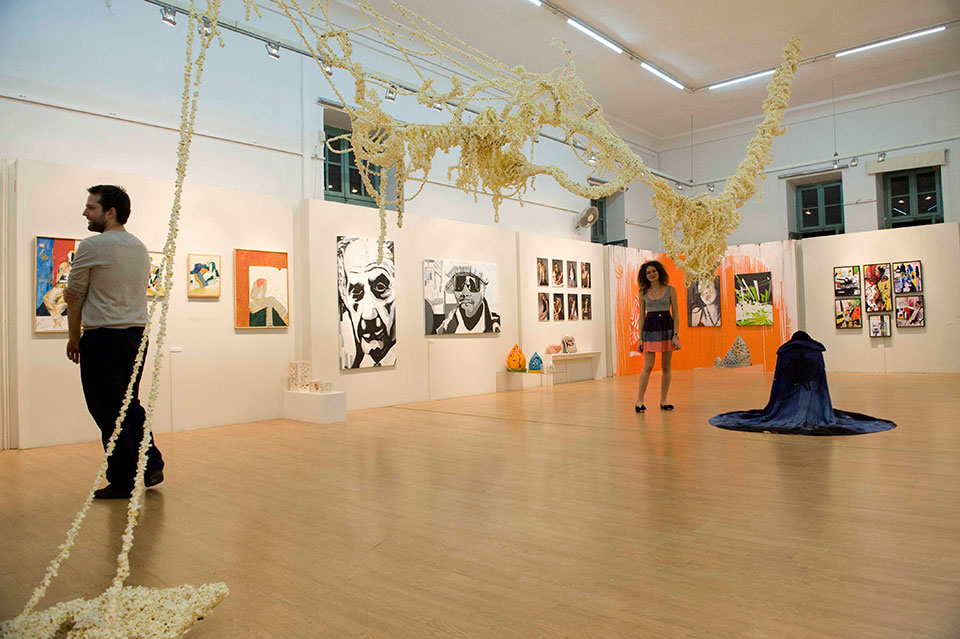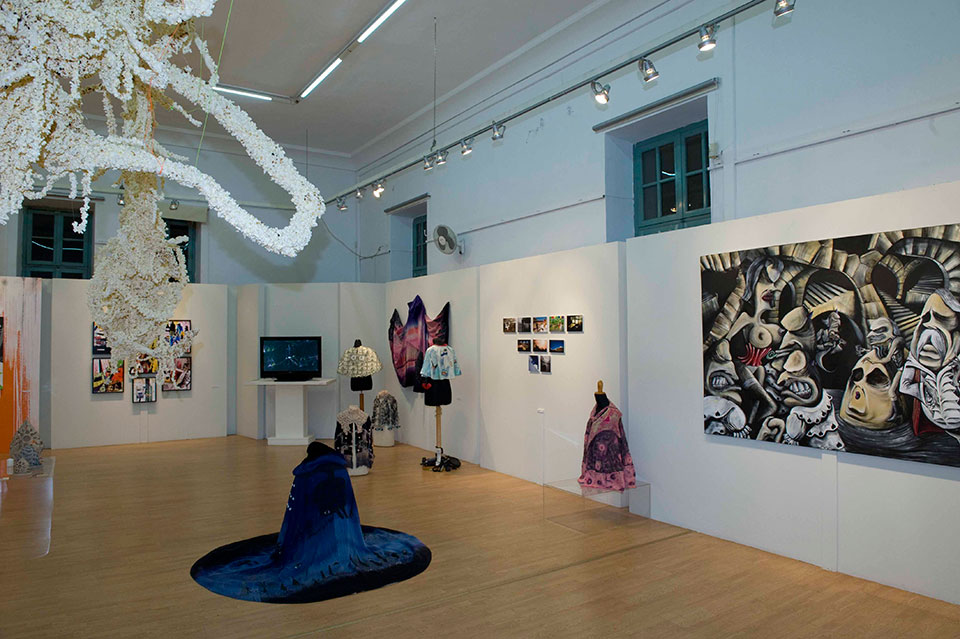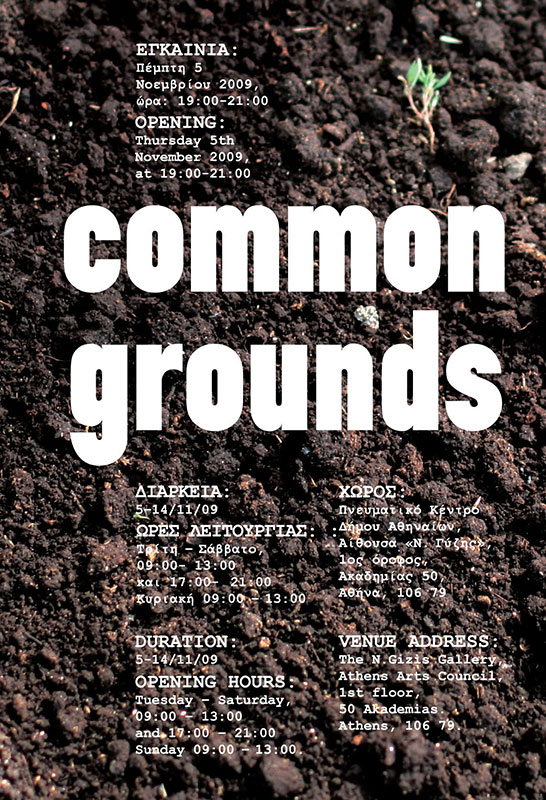Concept- curator/organizer
It is a basic human impulse to seek common ground in any field. And it is a basic human fact that common ground is often to be found where least expected – and least intended. Which is what makes the concept of common grounds in contemporary art a minefield.
What is common ground? Two paintings that both have a bit of blue? Or even the fact that they are both termed paintings – i.e. involve the application of oils with a brush on a canvas surface – in the first place? Is that enough? Is that really something they have in common? Common grounds? Or common coincidence? And who wants to be common anyway?
For in as much as it is basic human impulse to want to belong, to have in common, it is a basic artistic prerequisite to stand apart, to disagree, to have something else to say. To be an individual. Be uncommon. And the first step to standing apart is to subvert anything and everything that is common. To read not just the lines of overlap – of coincidence – but between them.
Common ground is the primary basis for the opening of any dialogue. If two individuals are to talk to each other – and understand each other when they talk – they must find at least one word in common to begin with. The rest can be taken from there. Two different people disagreeing in different languages might as well be agreeing.
What common ground is there in graphic design, site-specific installation, acrylics on canvas, video loops, architectural blueprints, works on paper, ceramics, digital prints, graffiti and a chair? How solid is it? Where does it take you? And if there is a fertile common ground, so what? What does this presuppose, what does it prove, what does it mean? What does it matter?
Perhaps the one common denominator between the twenty young contemporary artists exhibited is their roots: Campion School, at some point or other. One cannot choose one’s roots – one can only choose how to grow out of them. And where to take it from there. What matters is that.
And so in juxtaposing a single body of work by each of such diverse artists in the same space and against the same background, the exhibition sets out to map the common – and uncommon – grounds between them. To unearth each practice in the same light and each piece in its own right – as part of a parallel process, if in a different direction. As more than the sum of its parts. As an uncommon shoot with roots in common grounds.



